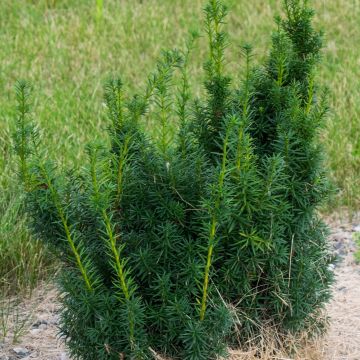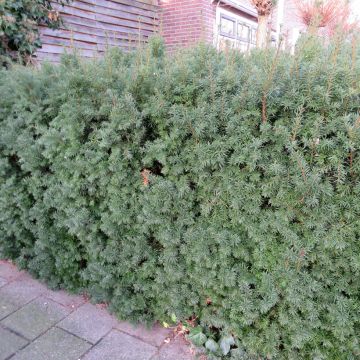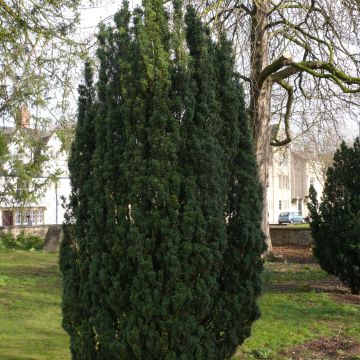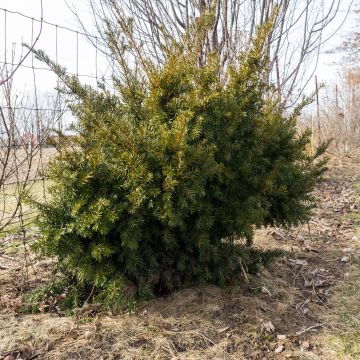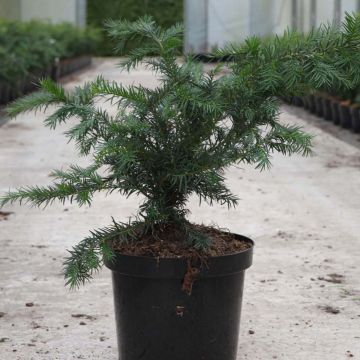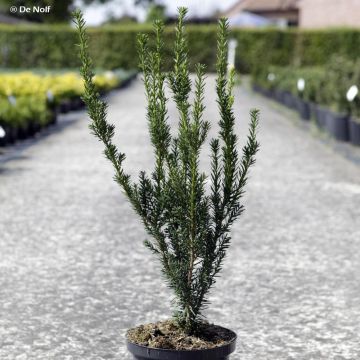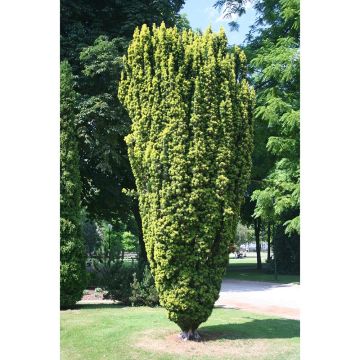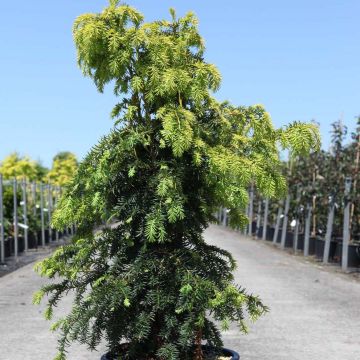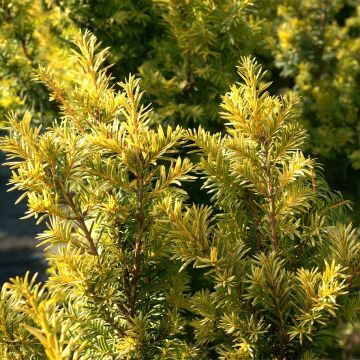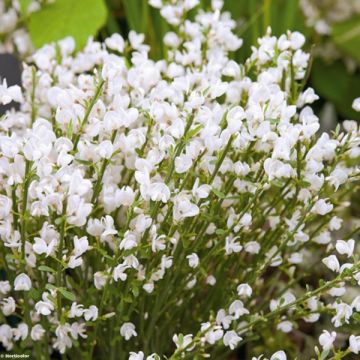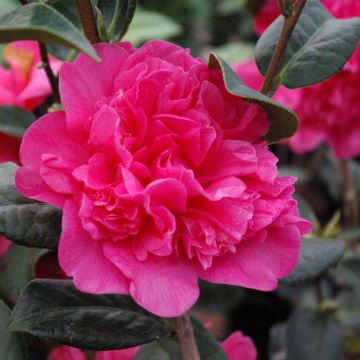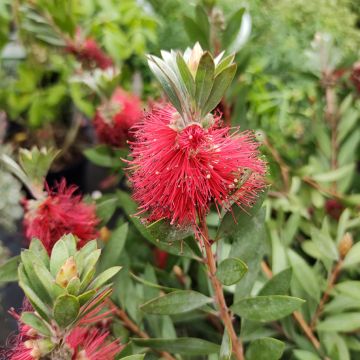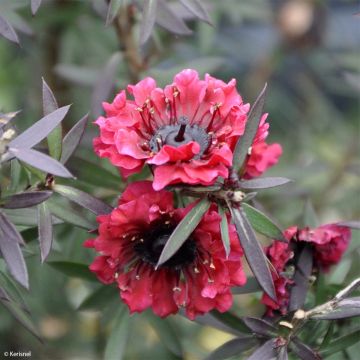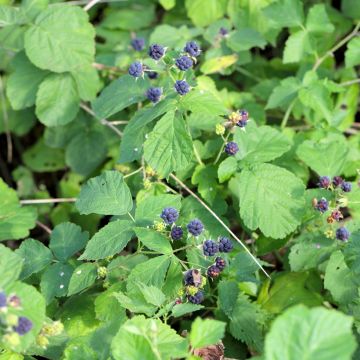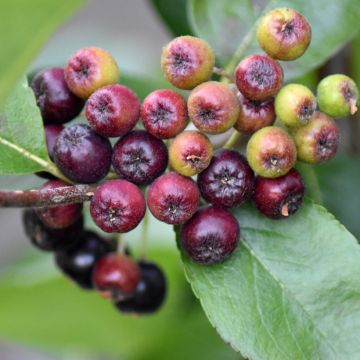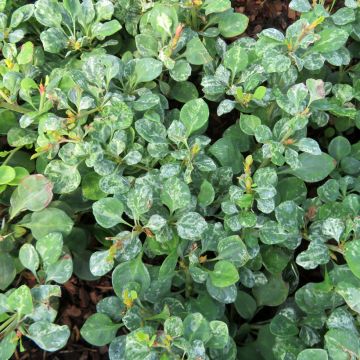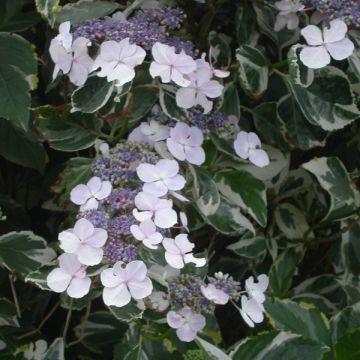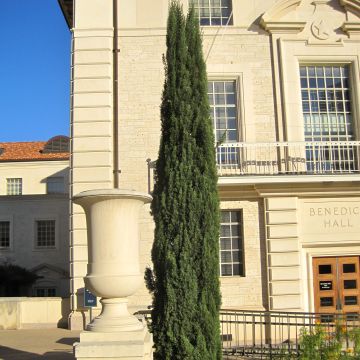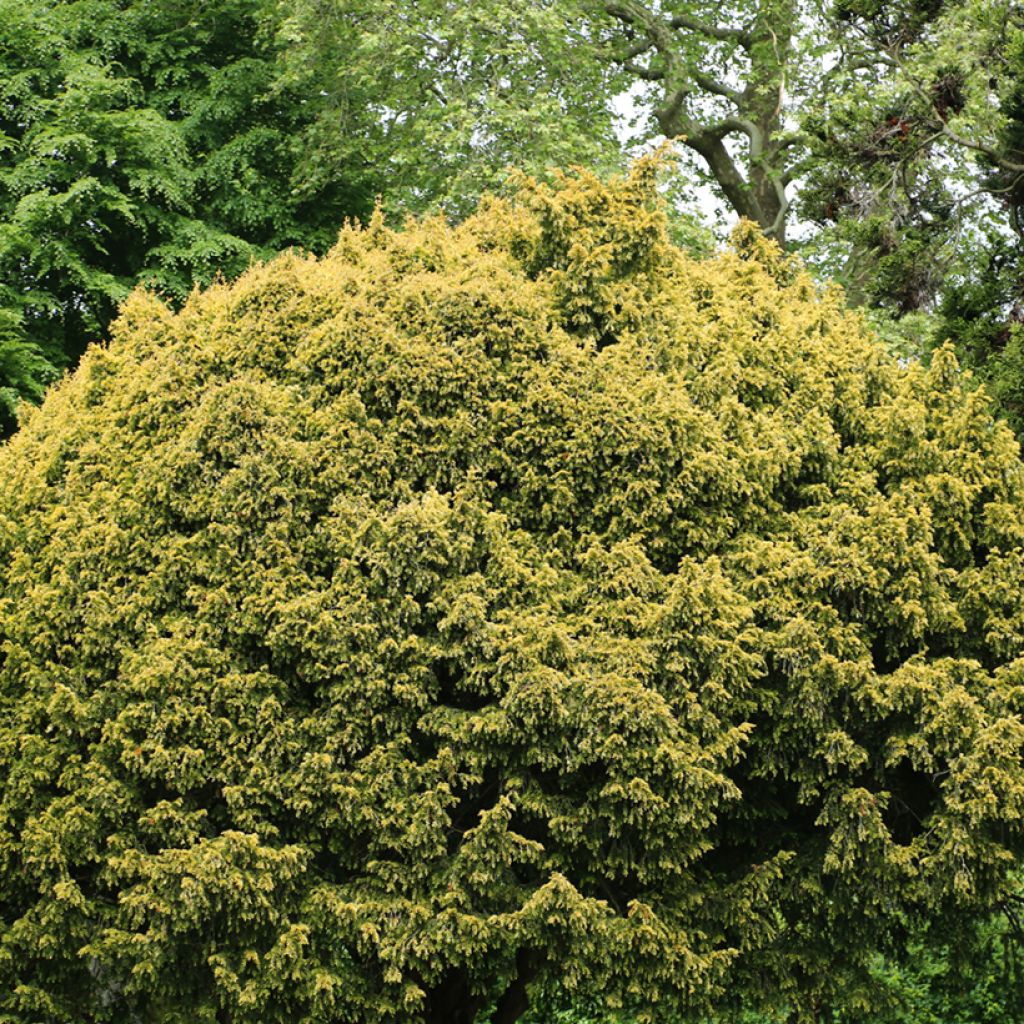

Taxus baccata Elegantissima - Yew
Taxus baccata Elegantissima - Yew
Taxus baccata Elegantissima
Yew, Common Yew, English Yew
This item cannot be shipped to the selected country
Delivery charge from €5.90
More information
Schedule delivery date,
and select date in basket
This plant carries a 24 months recovery warranty
More information
We guarantee the quality of our plants for a full growing cycle, and will replace at our expense any plant that fails to recover under normal climatic and planting conditions.
From €5.90 for pickup delivery and €6.90 for home delivery
Express home delivery from €8.90.
Does this plant fit my garden?
Set up your Plantfit profile →
Description
Taxus baccata 'Elegantissima' is a female cultivar of the common yew that is characterised by golden foliage, abundant fruiting, and moderate growth. It forms a highly colourful shrub throughout the seasons, particularly stunning in autumn when it is adorned with red berries. It is a variety suitable for medium-sized gardens, especially for creating an evergreen hedge or in a large bed. Like all common yews, this cultivar is hardy, low-maintenance, and not demanding in terms of soil requirements.
Taxus baccata 'Elegantissima' belongs to the Taxaceae family, and this cultivar with golden foliage was selected in the 1800s. Slow-growing, with an upright, broad, and compact habit, this shrub reaches a height of 1.5 m and a width of 1 m in a decade. Its annual growth is around 5 to 10 cm, so it reaches approximately 2 m in height and 1.50 m in spread at the age of 20. This conifer develops spreading branches adorned with golden yellow needles that turn cream-green over the weeks. If planted in shade, its needles remain lighter than those of the common yew, without being truly golden. This female cultivar produces small flowers in spring, which are not very visible but attractive to bees. In the presence of a nearby male plant, numerous red berries form in autumn. These berries are sought after by some birds but toxic to humans. The bark of this yew is also interesting for its reddish-brown colouration.
Very present in the oldest gardens and parks in Europe, Taxus baccata sometimes live for several centuries. The species, now rare in the wild, is native to Europe, Asia Minor, and North Africa. Impressive specimens can be admired in old gardens or in cemeteries, near churches for symbolic reasons (considered as a link between heaven and earth), but also to prevent animals from consuming them. The needles, bark, and fruits are toxic to humans and animals, except for birds that consume the berries and discard the seeds. It is a dioecious tree: individuals bear male or female flowers.
The 'Elegantissima' common yew is decorative throughout the seasons and will provide the backbone of the garden. It adapts to almost any location and to gardens of all styles: formal, classical, romantic, contemporary, minimalist, or Mediterranean. It can be integrated into a windbreak hedge with other hedge conifers or low-maintenance evergreen shrubs such as Elaeagnus ebbingei 'Compacta' or Photinia 'Carré Rouge', for example.
Report an error about the product description
Plant habit
Flowering
Foliage
Safety measures
Botanical data
Taxus
baccata
Elegantissima
Taxaceae
Yew, Common Yew, English Yew
Cultivar or hybrid
ingestion
Cette plante est toxique si elle est ingérée volontairement ou involontairement.
Ne la plantez pas là où de jeunes enfants peuvent évoluer, et lavez-vous les mains après l'avoir manipulée.
Pensez à conserver l'étiquette de la plante, à la photographier ou à noter son nom, afin de faciliter le travail des professionnels de santé.
Davantage d'informations sur https://plantes-risque.info
Other Taxus - Yew
Planting and care
The common yew 'Elegantissima' is not at all demanding. It thrives in full sun or partial shade, and even in shade in hot climates, in regular, well-drained soil, neutral or alkaline, possibly slightly acidic, preferably moist to dry in summer. It adapts easily to all climates and all types of soil. It can be pruned twice a year, in spring and autumn (the latter allowing for readjustment of the former), in April and August (depending on your climate).
Planting period
Intended location
Care
This item has not been reviewed yet - be the first to leave a review about it.
Hedge shrubs
Haven't found what you were looking for?
Hardiness is the lowest winter temperature a plant can endure without suffering serious damage or even dying. However, hardiness is affected by location (a sheltered area, such as a patio), protection (winter cover) and soil type (hardiness is improved by well-drained soil).

Photo Sharing Terms & Conditions
In order to encourage gardeners to interact and share their experiences, Promesse de fleurs offers various media enabling content to be uploaded onto its Site - in particular via the ‘Photo sharing’ module.
The User agrees to refrain from:
- Posting any content that is illegal, prejudicial, insulting, racist, inciteful to hatred, revisionist, contrary to public decency, that infringes on privacy or on the privacy rights of third parties, in particular the publicity rights of persons and goods, intellectual property rights, or the right to privacy.
- Submitting content on behalf of a third party;
- Impersonate the identity of a third party and/or publish any personal information about a third party;
In general, the User undertakes to refrain from any unethical behaviour.
All Content (in particular text, comments, files, images, photos, videos, creative works, etc.), which may be subject to property or intellectual property rights, image or other private rights, shall remain the property of the User, subject to the limited rights granted by the terms of the licence granted by Promesse de fleurs as stated below. Users are at liberty to publish or not to publish such Content on the Site, notably via the ‘Photo Sharing’ facility, and accept that this Content shall be made public and freely accessible, notably on the Internet.
Users further acknowledge, undertake to have ,and guarantee that they hold all necessary rights and permissions to publish such material on the Site, in particular with regard to the legislation in force pertaining to any privacy, property, intellectual property, image, or contractual rights, or rights of any other nature. By publishing such Content on the Site, Users acknowledge accepting full liability as publishers of the Content within the meaning of the law, and grant Promesse de fleurs, free of charge, an inclusive, worldwide licence for the said Content for the entire duration of its publication, including all reproduction, representation, up/downloading, displaying, performing, transmission, and storage rights.
Users also grant permission for their name to be linked to the Content and accept that this link may not always be made available.
By engaging in posting material, Users consent to their Content becoming automatically accessible on the Internet, in particular on other sites and/or blogs and/or web pages of the Promesse de fleurs site, including in particular social pages and the Promesse de fleurs catalogue.
Users may secure the removal of entrusted content free of charge by issuing a simple request via our contact form.
The flowering period indicated on our website applies to countries and regions located in USDA zone 8 (France, the United Kingdom, Ireland, the Netherlands, etc.)
It will vary according to where you live:
- In zones 9 to 10 (Italy, Spain, Greece, etc.), flowering will occur about 2 to 4 weeks earlier.
- In zones 6 to 7 (Germany, Poland, Slovenia, and lower mountainous regions), flowering will be delayed by 2 to 3 weeks.
- In zone 5 (Central Europe, Scandinavia), blooming will be delayed by 3 to 5 weeks.
In temperate climates, pruning of spring-flowering shrubs (forsythia, spireas, etc.) should be done just after flowering.
Pruning of summer-flowering shrubs (Indian Lilac, Perovskia, etc.) can be done in winter or spring.
In cold regions as well as with frost-sensitive plants, avoid pruning too early when severe frosts may still occur.
The planting period indicated on our website applies to countries and regions located in USDA zone 8 (France, United Kingdom, Ireland, Netherlands).
It will vary according to where you live:
- In Mediterranean zones (Marseille, Madrid, Milan, etc.), autumn and winter are the best planting periods.
- In continental zones (Strasbourg, Munich, Vienna, etc.), delay planting by 2 to 3 weeks in spring and bring it forward by 2 to 4 weeks in autumn.
- In mountainous regions (the Alps, Pyrenees, Carpathians, etc.), it is best to plant in late spring (May-June) or late summer (August-September).
The harvesting period indicated on our website applies to countries and regions in USDA zone 8 (France, England, Ireland, the Netherlands).
In colder areas (Scandinavia, Poland, Austria...) fruit and vegetable harvests are likely to be delayed by 3-4 weeks.
In warmer areas (Italy, Spain, Greece, etc.), harvesting will probably take place earlier, depending on weather conditions.
The sowing periods indicated on our website apply to countries and regions within USDA Zone 8 (France, UK, Ireland, Netherlands).
In colder areas (Scandinavia, Poland, Austria...), delay any outdoor sowing by 3-4 weeks, or sow under glass.
In warmer climes (Italy, Spain, Greece, etc.), bring outdoor sowing forward by a few weeks.

































